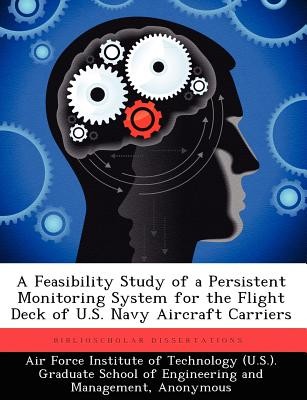
- We will send in 10–14 business days.
- Author: Jeffrey S Johnston
- Publisher: BiblioScholar
- ISBN-10: 1249456614
- ISBN-13: 9781249456612
- Format: 18.9 x 24.6 x 1.1 cm, softcover
- Language: English
- SAVE -10% with code: EXTRA
A Feasibility Study of a Persistent Monitoring System for the Flight Deck of U.S. Navy Aircraft Carriers (e-book) (used book) | bookbook.eu
Reviews
Description
This research analyzes the use of modern Real Time Locating Systems (RTLS), such as the Global Positioning System (GPS), to improve the safety of aircraft, equipment, and personnel onboard a United States Navy (USN) aircraft carrier. The results of a detailed analysis of USN safety records since 1980 show that mishaps which could potentially be prevented by a persistent monitoring system result in the death of a sailor nearly every other year and account for at least $92,486,469, or 5.55% of the total cost of all flight deck and hangar bay related mishaps. A system to continually monitor flight deck operations is proposed with four successive levels of increasing capability. A study of past and present work in the area of aircraft carrier flight deck operations is performed. This research conducted a study of the movements of USN personnel and an FA-18C aircraft being towed at NAS Oceana, VA. Using two precision GPS recorders mounted on the aircraft wingtips, the position and orientation of the aircraft, in two-dimensions, are calculated and the errors in this solution are explored. The distance between personnel and the aircraft is calculated in the nearest neighbor sense. Pseudospectral motion planning techniques are presented to provide route prediction for aircraft, support equipment, and personnel. Concepts for system components, such as aircraft and personnel receivers, are described. Methods to recognize and communicate the presence of hazardous situations are discussed. The end result of this research is the identification of performance requirements, limitations, and definition of areas of further research for the development of a flight deck persistent monitoring system with the capability to warn of hazardous situations, ease the incorporation of UAVs, and reduce the risk of death or injury faced by sailors on the flight deck.
EXTRA 10 % discount with code: EXTRA
The promotion ends in 17d.21:49:27
The discount code is valid when purchasing from 10 €. Discounts do not stack.
- Author: Jeffrey S Johnston
- Publisher: BiblioScholar
- ISBN-10: 1249456614
- ISBN-13: 9781249456612
- Format: 18.9 x 24.6 x 1.1 cm, softcover
- Language: English English
This research analyzes the use of modern Real Time Locating Systems (RTLS), such as the Global Positioning System (GPS), to improve the safety of aircraft, equipment, and personnel onboard a United States Navy (USN) aircraft carrier. The results of a detailed analysis of USN safety records since 1980 show that mishaps which could potentially be prevented by a persistent monitoring system result in the death of a sailor nearly every other year and account for at least $92,486,469, or 5.55% of the total cost of all flight deck and hangar bay related mishaps. A system to continually monitor flight deck operations is proposed with four successive levels of increasing capability. A study of past and present work in the area of aircraft carrier flight deck operations is performed. This research conducted a study of the movements of USN personnel and an FA-18C aircraft being towed at NAS Oceana, VA. Using two precision GPS recorders mounted on the aircraft wingtips, the position and orientation of the aircraft, in two-dimensions, are calculated and the errors in this solution are explored. The distance between personnel and the aircraft is calculated in the nearest neighbor sense. Pseudospectral motion planning techniques are presented to provide route prediction for aircraft, support equipment, and personnel. Concepts for system components, such as aircraft and personnel receivers, are described. Methods to recognize and communicate the presence of hazardous situations are discussed. The end result of this research is the identification of performance requirements, limitations, and definition of areas of further research for the development of a flight deck persistent monitoring system with the capability to warn of hazardous situations, ease the incorporation of UAVs, and reduce the risk of death or injury faced by sailors on the flight deck.


Reviews